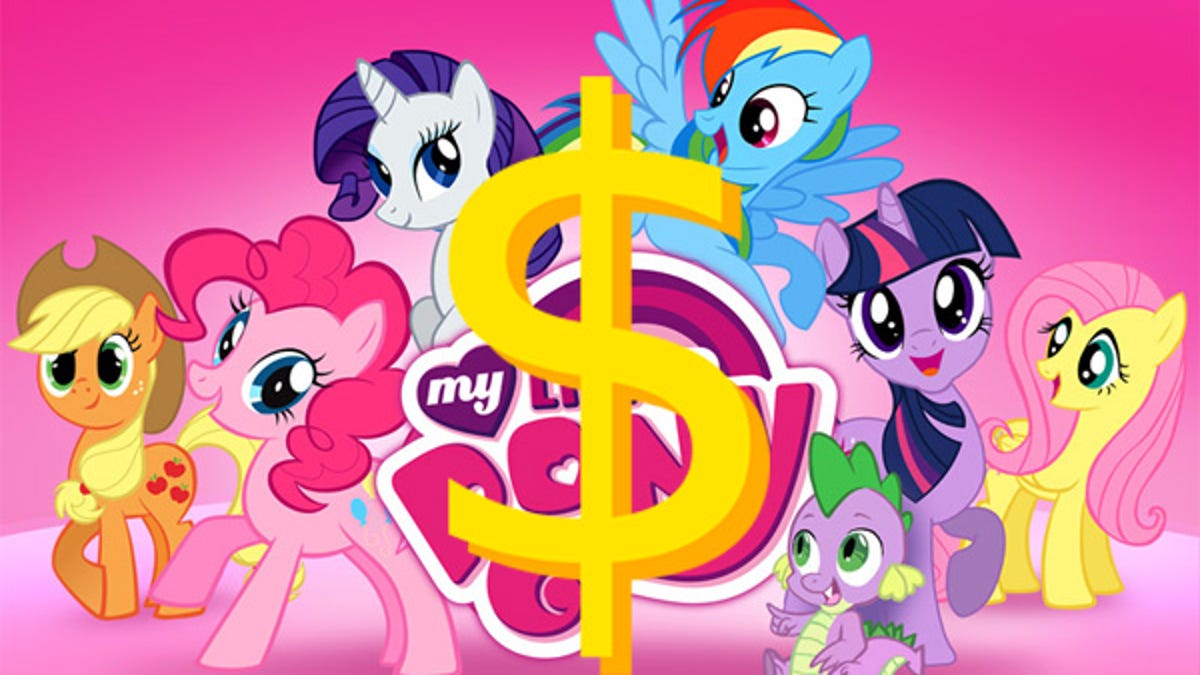Gameloft, My Little Pony and rampant greed
Want to play the My Little Pony story on mobile? You're going to have to pay through the nose.

(Credit: Hasbro; CBSi)
Want to play the My Little Pony story on mobile? You're going to have to pay through the nose.
Gameloft is one of mobile game development's biggest creators of freemium titles. It was also commissioned by Hasbro to make My Little Pony: Friendship is Magic, a game in which you have to rebuild and manage the town of Ponyville.
The title had been hotly anticipated by Pony fans for months leading up to its release, and has been downloaded in droves.
I'm very familiar with Gameloft's freemium town-building modus operandi, so I thought I knew what I was getting into. A free-to-play game with some premium content that can be purchased for a not terribly unreasonable sum, and sometimes you have to either pay money or stop playing for a little while in order to recharge energy.
In My Little Pony, the game's story revolves around restoring the six key characters from the TV show to Ponyville. As you level up, these characters are unlocked in the store. The first bad sign was when one of the characters cost the game's premium currency, gems, which can be obtained very slowly — one gem every three or four levels — or purchased in the store. The going rate for this character was 90 gems, or around AU$10.
Now, I don't mind paying money in a freemium game if I'm having a good time, although I do believe that spending money in a freemium title should be absolutely optional. This was not; although, as mentioned, gems can be obtained in-game without a purchase, it would take around 350 levels to get enough to purchase that character. She is unlocked at 19, and the game won't progress until she is obtained.
Then I reached level 43, the point at which the last of the six ponies is unlocked — one of the most popular.
Her price? 500 gems. You have two options: play the game for three years and hope that there's no max level; or spend AU$51.99. But without doing one of those things, the game cannot be completed.
It is, quite simply put, the most blatant demonstration of sheer greed that I've ever seen in a freemium title. Gameloft and Hasbro knew that the legions of My Little Pony fans would flock to the title, and that they would want that last pony unlocked. They also, presumably, knew that children would gravitate toward the game as well.
What they didn't reckon on was players turning away from the game in disgust.
None of this breaks any of Apple's rules, and that's fine; it's not up to Apple to police how companies ask for, and people spend, money. It is, however, leaving a lot of My Little Pony fans with a bad taste in their mouths, especially coupled with Gameloft's terrible social integration.
It's been demonstrated that IAP can make a game a lot of money, and that people are willing to spend. But I wouldn't be surprised if Gameloft and Hasbro find My Little Pony revenue well below projections.
If your content has fans, that's great; but it won't work out well if you treat them like a captive audience of idiots who are just there to be taken advantage of.

